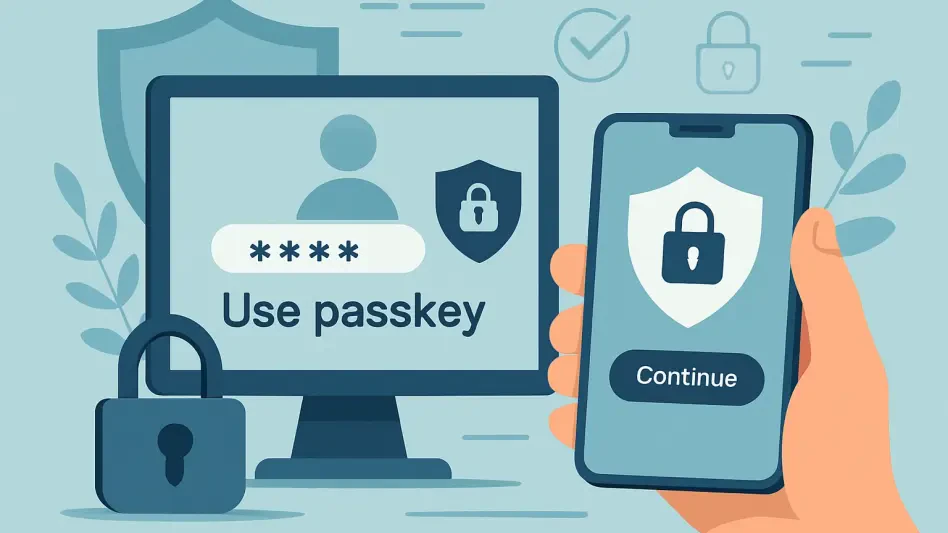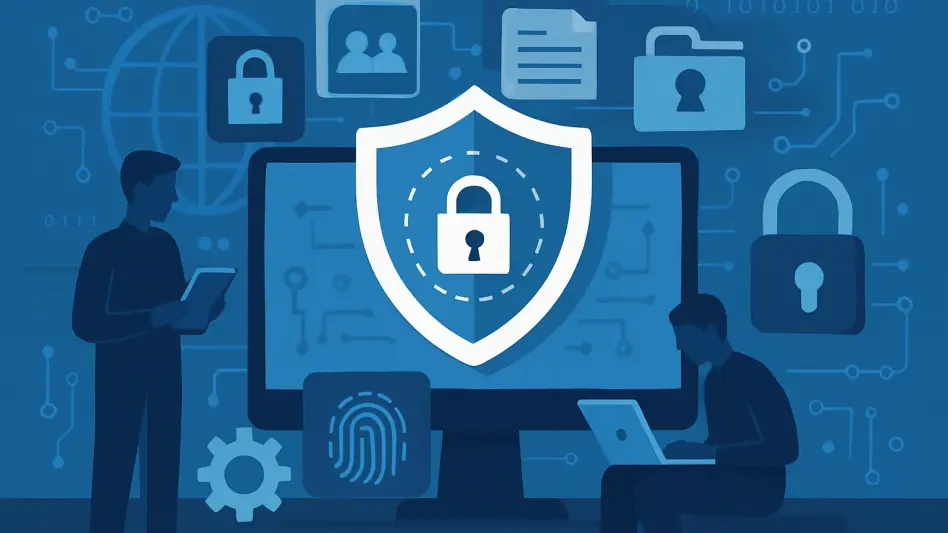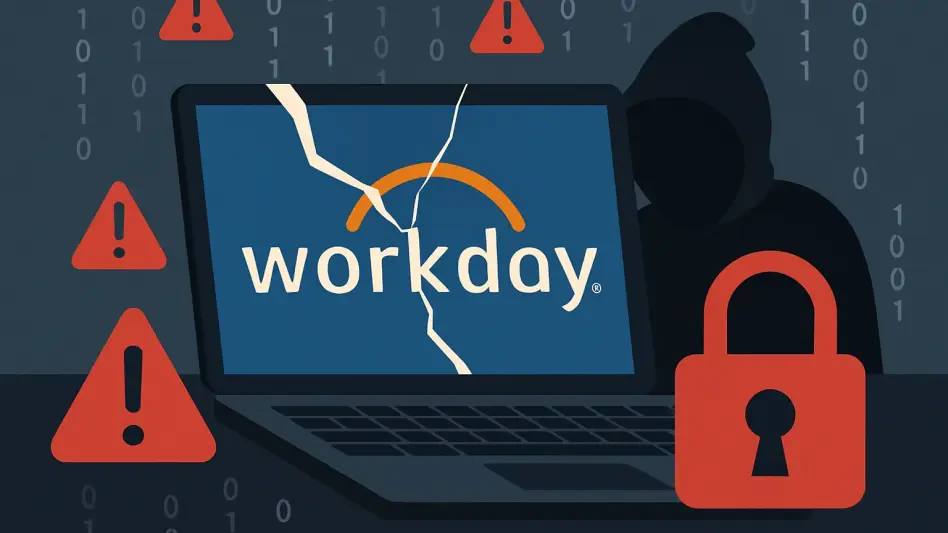Imagine a digital landscape where the frustration of forgotten passwords and the constant threat of cyberattacks are relics of the past—a reality where accessing online accounts is both seamless and secure. This vision is becoming tangible with the rise of passkeys, an innovative authentication method poised to replace the outdated and vulnerable password system. As cyber threats evolve, becoming more sophisticated with each passing day, traditional passwords are increasingly seen as a weak link in personal and organizational security. Often guessed, stolen, or compromised through phishing scams, passwords leave users exposed to risks that can have devastating consequences. Passkeys, built on advanced cryptographic principles, offer a promising solution to these persistent challenges. By eliminating many of the flaws inherent in password-based systems, they provide a stronger shield against unauthorized access. This article delves into the mechanics of passkeys, explores their storage options, addresses common misconceptions, and evaluates their security benefits and limitations. The goal is to illuminate why this technology represents a significant leap forward in safeguarding digital identities and why embracing it could be a critical step for anyone navigating the online world.
Understanding the Mechanics of Passkeys
The foundation of passkeys lies in a robust security approach known as public-key cryptography, a method that fundamentally changes how authentication works compared to traditional passwords. This system operates on a pair of keys: a public key, which is shared with the website or service being accessed, and a private key, which remains securely stored on the user’s device or account, never transmitted or exposed during the login process. This design ensures that even if a malicious actor intercepts the public key, it cannot be used to derive the private key or gain unauthorized access. Unlike passwords, which can be cracked through brute force attacks or stolen via data breaches, passkeys create a nearly impenetrable barrier against such threats. The simplicity of this concept belies its power—users no longer need to rely on memorizing complex strings of characters, as the technology handles the heavy lifting of security behind the scenes.
Passkeys are further strengthened by their adherence to the WebAuthn standard, a protocol that ensures they are domain-specific, meaning they only function with the exact website or service for which they were created. This feature is a game-changer in the fight against phishing, a tactic where attackers lure users to fake websites to steal credentials. With passkeys, even if someone is deceived into visiting a fraudulent site, the authentication will fail because the domain does not match. This built-in safeguard addresses one of the most pervasive vulnerabilities of password systems, where a single misstep can lead to compromised accounts. By embedding this level of protection directly into the authentication process, passkeys offer a proactive defense that passwords simply cannot match, marking a significant evolution in how online security is approached.
Exploring Passkey Storage Options
When adopting passkeys, one of the primary considerations is how and where they are stored, as this directly impacts both convenience and security. Cloud storage emerges as a popular choice, supported by major technology providers such as Apple, Google, and Microsoft, as well as third-party password managers. This method allows passkeys to be synced across multiple devices, enabling users to log into accounts whether they’re using a smartphone, laptop, or tablet. The ease of access is undeniable—there’s no need to worry about being tied to a single piece of hardware. However, this convenience comes with a potential downside: if a cloud account is breached due to weak security practices or a successful phishing attempt, the stored passkeys could be at risk. This highlights the importance of securing the overarching account with strong protective measures to ensure that the benefits of cloud storage are not undermined by vulnerabilities elsewhere in the system.
In contrast, local storage offers a different approach by tying passkeys to a specific device or hardware security key, such as a YubiKey. This method prioritizes security by requiring physical possession of the device for authentication, significantly reducing the attack surface compared to cloud-based options. Hackers cannot remotely access a passkey stored on a device they do not have. Yet, this heightened security introduces its own set of challenges. If the device is lost, damaged, or stolen without a backup mechanism in place, access to accounts could be permanently blocked. This trade-off between robust protection and the risk of losing access underscores the need for careful planning when opting for local storage. Users must weigh their priorities, balancing the desire for ironclad security against the practical need for accessibility in their daily digital interactions.
Addressing Common Misconceptions
A prevalent myth surrounding passkeys is the notion that they bind users to a single ecosystem, such as being locked into Apple’s or Google’s services with no way out. This concern is unfounded, as the technology allows for the creation of multiple unique passkeys for the same service across different platforms or accounts. This means a user can have distinct passkeys tied to various providers or devices, ensuring flexibility and freedom of choice. Unlike a duplicate house key that merely replicates access, each passkey is an independent entity that cannot be copied, preserving its security regardless of where or how it is used. This capability dispels fears of being trapped in a walled garden, demonstrating that passkeys are designed to adapt to diverse user needs rather than restrict them.
Another area of skepticism has been the portability of passkeys, especially in their early iterations when they were often bound to the device on which they were created. Losing a device could mean losing access to accounts, a significant barrier to adoption. However, recent advancements have addressed this limitation head-on. Updates in software from major tech companies, alongside enhancements from password managers like Bitwarden, have introduced secure methods to import and export passkeys. This development ensures that transitioning between devices or recovering from loss is no longer a daunting obstacle. Such progress reflects the ongoing evolution of passkey technology, making it more user-friendly and practical for widespread use while maintaining the high security standards that set it apart from traditional authentication methods.
Evaluating Security Strengths and Limitations
One of the standout advantages of passkeys is their inherent resistance to phishing attacks, a persistent threat that has long plagued password-based systems. By design, passkeys are tied to the specific domain of the service they are associated with, and the private key is never transmitted during authentication. This means that even if a user is tricked into interacting with a fraudulent website, the passkey will not function there, effectively halting the attack before any damage is done. Additionally, since no sensitive data is exchanged in the process, there is nothing for hackers to intercept or steal. This represents a profound shift from the vulnerabilities of passwords, where a single lapse in judgment—such as entering credentials on a fake site—can lead to catastrophic breaches of personal or professional accounts.
Despite their impressive security features, passkeys are not an all-encompassing solution to every cyber threat. A notable limitation lies in their inability to prevent session hijacking, a scenario where malware on a device steals session cookies after authentication has occurred, allowing attackers to access an active session. This vulnerability exists outside the scope of passkey protection, emphasizing that while they fortify the login process, broader cybersecurity practices remain essential. Keeping devices free from malicious software through regular updates, cautious browsing habits, and robust antivirus measures is critical to complement the benefits of passkeys. This layered approach to security ensures that the technology’s strengths are maximized while mitigating risks that fall beyond its direct control.
Looking Ahead to a Password-Free Future
Reflecting on the journey of digital authentication, passkeys emerged as a transformative force that tackled many of the insecurities tied to passwords. Their adoption marked a pivotal moment, offering a safer, more streamlined way to protect online identities through cryptographic innovation. By curbing risks like phishing and simplifying access across devices, this technology redefined expectations for security in an increasingly connected world.
As the digital realm continues to evolve, the next steps involve wider implementation of passkeys across services and platforms, ensuring they become a universal standard. Users and organizations alike should prioritize education on how to integrate this technology effectively, choosing storage options that align with their security needs. Staying vigilant against malware and other threats will remain crucial to support passkeys’ effectiveness. Ultimately, embracing this shift promises not just enhanced protection, but a future where the burden of passwords is lifted, paving the way for smoother, safer online experiences.








